The Latest from Boing Boing |  |
- Fidel Castro believes Wikileaks documents prove Bin Laden is US spy
- Adorable handmade space alien sculptures "for the conspiracy theorist in us all"
- "So you are coming to the 8/28 Glenn Beck March on Washington?"
- Spike Priggen's VeeJay videos
- Cat sneaks on to train, gets lost, is reunited with owner via Twitter
- Historic NASA launch pad to become an engineering classroom?
- Kitty Cent (or alternately, Hello Fiddy)
- First impression of the new Blackwing pencil
- Citizen science and why biodiversity is a great portal to discovery
- Hitty Cent
- Dr. Franklin Ruehl's promo tape and channel
- Pillows printed with buildings
- Fly steers mobile robot
- Filling Up Prisons Without Fighting Crime: Mark Kleiman on America's Criminal Justice System
- San Francisco: Scotty Albrecht solo show opens tonight
- Make your own custom fit earbuds
- Rudy Coby at El Rey Theatre in LA, October 23
- Craft and Make projects in Evernote Trunk
- This is what a quadrillion looks like
- Tiger cub found inside suitcase
- Popular Mechanics tackles the myths of Hurricane Katrina
- Microsoft.com permanently under attack
- The political chemistry of oil
- Bananas are radioactive—But they aren't a good way to explain radiation exposure
- Cannibal restaurant in Germany?
- Jazz musician jams with animals
- This is not a perfect dinosaur turd. Or is it?
- Scott Pilgrim vs. The Last Airbender
- Tonoharu: Excellent graphic novel about an English teacher in Japan
- 50 Cent Meets Rainn Wilson
| Fidel Castro believes Wikileaks documents prove Bin Laden is US spy Posted: 27 Aug 2010 10:08 PM PDT 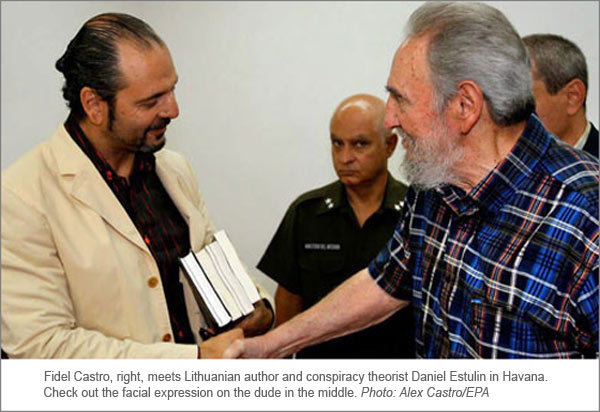 During a visit with a Lithuanian author "known as a font of intriguing conspiracy theories about plots for world domination," Cuban president Fidel Castro said he believes that Osama Bin Laden was working for the White House, and that the tens of thousands of military documents recently published by WikiLeaks prove exactly who the al-Qaida leader is really working for. (via Dave Winer) |
| Adorable handmade space alien sculptures "for the conspiracy theorist in us all" Posted: 27 Aug 2010 10:17 PM PDT 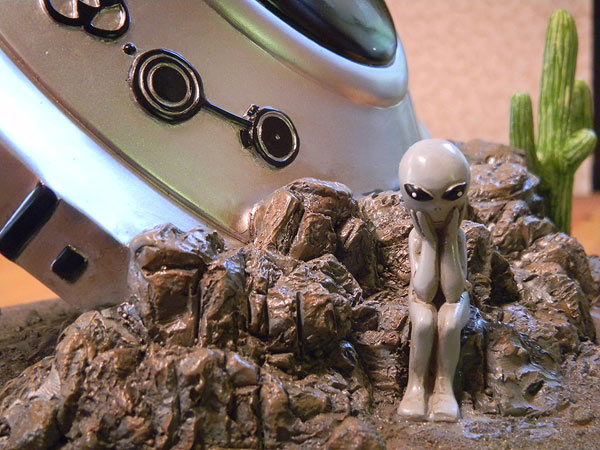 Roger Phillips of Close Encounters Studios in Mahopac, NY designs hand-crafted and hand-painted sculptures of endearing space aliens in funny little scenarios. Above, detail view of a resting extraterrestrial from "Crash Landing in Roswell, New Mexico." Below, a detail from "Encounter at Hangar 18." Sculptures are 8.5" x 9.5," sell for $49.95, and Mr. Phillips' most recent designs will be available in October. Purchase here. (via BB Submitterator, thanks UFOBoingBoing!) |
| "So you are coming to the 8/28 Glenn Beck March on Washington?" Posted: 27 Aug 2010 09:14 PM PDT The title asks, "So you are coming to the 8/28 Glenn Beck March on Washington?" You know, the one taking place on the anniversary of Dr. Martin Luther King's "I Have A Dream" speech? If the answer's yes, here's your guidebook, with handy information on how to avoid The Gays, The Blacks, and The Immigrants—even helpful tips on which cafés "restrict your access to 'adult' sites." Because, you know, you'll wanna porn up before heading over there wait what? Via BB Submitterator (thanks, James!), more maps and lulz at The Atlantic. |
| Posted: 27 Aug 2010 10:49 AM PDT Bedazzled.tv's Spike Priggen has been using Modul8 software to do real-time veejaying. I like what he did with Rufus Thomas' "Sixty Minute Man Part Two." See more of Spike's videos at his YouTube channel. |
| Cat sneaks on to train, gets lost, is reunited with owner via Twitter Posted: 27 Aug 2010 09:40 PM PDT  Via the Submitterator, Boing Boing reader Johnny Meerkat says, A suburban cat wandered onto a city-bound train in Dublin, Ireland only to emerge at a city center station. Rail staff used CCTV to figure out which station the cat boarded at, and through Twitter, cat and owner were reunited. As a "reward," the cat was issued a rail pass.CCTV, in this case, stands for "Cat Catching TV." Above left: Lilou, in repose. Look at her smug face. Top right, surveillance video that captured Lilou totally not paying train fare like other law-abiding citizens, and sneaking on to the platform as if she owned it. And bottom right, Lilou's new rail pass, which really does need a LOLWUT. Who says cat-crime doesn't pay? Full story plus larger size photos and two video reports (you'll need Real Player to view them, hahaha) at RTÉ News.
Reached for comment on the matter, Shocked Cat says: 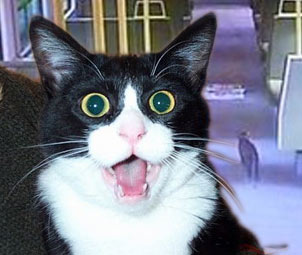 |
| Historic NASA launch pad to become an engineering classroom? Posted: 27 Aug 2010 08:51 PM PDT Via the BB Submitterator, the folks at Collectspace.com alert us to an interesting story of creative reuse: "The launch pad from which the first United States astronauts left Earth for orbit may soon be revived as an engineering classroom for a new generation of rocket builders, where laid off space shuttle technicians are the teachers." |
| Kitty Cent (or alternately, Hello Fiddy) Posted: 27 Aug 2010 06:10 PM PDT  (Click for large). Yo, Fiddy? Forgot one. Earlier today, the rap mogul Photoshopped himself on Twitter as: Adolf Hitler, Saddam Hussein, Fidel Castro, and Osama Bin Laden. UPDATE: By popular demand, the alternate version: Hello Fiddy...
[Thanks for the idea, @mykola! 'shopped by Xeni.]
|
| First impression of the new Blackwing pencil Posted: 27 Aug 2010 11:35 PM PDT  In 1998, Eberhard Faber stopped making the Blackwing 602 pencil, and its cult users have been pining for them ever since. An unsharpened Blackwing can sell for $40 on eBay. One person told me his eBay auction for a box of Blackwings went to a "song writer/composer who's worked with Barry Manilow and on feature films, and chooses to only write music using the Blackwing 602." Today I received in the mail two pre-production Palomino Blackwing pencils, made by California Cedar. Keeping in mind these are pre-production pencils, here are my impressions after using the pencil for a few minutes. More photos and notes after the jump (click images to embiggen). APPEARANCE
• The color of the new Blackwing (NB) is flat black. The color of the original Blackwing is (OB) is a lustrous charcoal gray. • NB has a gold band painted near the top of the wood, OB does not. • OB has a black band painted on the ferrule, NB does not. • OB has stamped motto HALF THE PRESSURE, TWICE THE SPEED, NB does not. • OB has pink eraser, NB has white eraser. SMELL OF WOOD • NB has a stronger, spicy smell. Reminded me of Indian food. Not unpleasant. OB's smell is faint, but this could be due to its age (at least 12 years old). PENCIL LEAD TEST (preliminary)
• NB is quieter on the paper. • OB holds a point longer than NB. • I also compared the OB and NB to a Palomino HB, one of my favorite pencils. The Palomino actually seems closer to the OB than the NB does! • A cheap pencil I found in my daughter's desk was so close in quality to the OB, NB, and Palomino HB that I found myself wondering why I was caring so darn much about pencils. PRELIMINARY CONCLUSION I like the OB for sentimental reasons. If the NB ends up looking almost exactly like the OB and costs under $2.00, I will buy it. Otherwise I will use any HB that ends up in my hand. Here are some photos comparing the different pencil leads I tried: |
| Citizen science and why biodiversity is a great portal to discovery Posted: 27 Aug 2010 06:53 AM PDT  (Image: Stemonitis) In case you don't have a handy dandy seaweed identification key, get your free one here and do some science. Recently, a friend asked me about my earliest childhood memories, and two very vivid ones came to mind. First, there is this image of a sycamore seed falling from the sky; the aerodynamic wonder that can helicopter down from the tall heights of a tree. Second, and also involving the act of looking up, I remember seeing the underbelly of a blue whale, the largest animal on the planet, suspended in air in the London Natural History Museum's great Mammal Hall. In fact, I remember thinking it was the most massive thing possible, no doubt reflecting my own childish perspective. It is also the the emotional reason of why I'm doing a sabbatical there. In both cases, the memory relives not only what I saw, but also a sensation. This being a quickening of my heart, a very corporeal buzz, and a sense of clarity in my head that has stayed with me throughout my life. You see, this is what discovery feels like. And from an educator's point of view, this I think is biodiversity's greatest strength. The flora, fauna, and terrains of our graceful planet contain a whole world of discovery. It only takes a single child and a trip outdoors, to realize that it is arguably our planet's richest resource of intellectual query. This is also why I think citizen science projects are particularly wonderful. Many of them do focus on wildlife spotting. And while there's obviously many caveats associated with these projects (i.e. can the non-expert provide valid observation), at their heart, they are a mechanism for people to get involved with science, and in a way which is meant to involve an element of relevancy (i.e. you're collecting data!) The fact that wildlife spotting also forces you to go outside is just an added bonus as far as I'm concerned. Anyway, the Natural History Museum has a few on the go that are just about perfect for folks who like going to the beach (The Big Seaweed Search) or hanging out in their garden (The Urban Tree Survey). The seaweed one is pretty cool, just because I think the idea of knowing your seaweed is brilliant. Plus, who wouldn't want to help out the British Phycological Society? (definitely CV worthy). The one involving urban trees is also interesting. Especially from the point of view that to scientists, the flora in everyone's backyard is a little bit of a black box. In other words, a biologist doing field work rarely gets the opportunity to examine what is growing on private land. This kind of data might be useful as a way of further equating a country's tree biomass, as well as exploring distribution patterns over time (i.e. is it changing, and if so, is there an interesting scientific question worth examining?) As an added bonus, this survey also has a pretty nice web friendly identification key you can use. Anyway, in an effort to get just a few more people involved in citizen science, I've put up a new Science Scout badge. Game on!
Link to The Big Seaweed Search NOTE: Although Maggie mentioned this a while back (and it's also been in the press generally), you should also totally (re)check out this other citizen science project called Foldit. Think of it as a polished video game for protein structure design, made for the Tetris mindhive. |
| Posted: 27 Aug 2010 06:43 PM PDT  50 Cent just Godwinned Twitter. At left, the rapper whose bad day up-ended the entire internet just 24 hours ago has apparently photoshopped himself as Adolf Twitler. At right, as Bin Laden. WHAT DOES IT MEAAAAAN? What's next, LOLcents? Below, Fiddy comes to terms with the fact that he is powerless over his compulsion to tweet.
|
| Dr. Franklin Ruehl's promo tape and channel Posted: 27 Aug 2010 03:19 PM PDT Some of you may recall that I am a big fan of physicist Dr. Franklin Ruehl. I previously mentioned an episode of The Tupperware Container of Ironic/Coincidental Hollywood Deaths. Aficionados of weird video unfamiliar with his oeuvre, prepare yourselves for a weekend treat. Since my last post, he has uploaded a lot of his vintage work to his YouTube channel, including several of his Pat Sajak Show appearances, and a demo reel (above) that includes his hand-made replica of the world's largest shoestring bezoar, among other timeless treasures. |
| Pillows printed with buildings Posted: 27 Aug 2010 02:33 PM PDT  "Build Your Block" sells pillows printed with a variety of buildings, from NYC Brownstones to abandoned Brooklyn buildings. You can even have your own hood printed on them. Emily Goligoski has the details at TheSanFranista. |
| Posted: 27 Aug 2010 01:25 PM PDT In this video, a fruit fly steers a small robot through an obstacle course. The researchers at ETH Zurich's Institute of Robotics and Intelligent Systems glued a fly down in front of an array of LEDs and flashed patterns that tricked it into thinking it was flying. Data from a computer vision system trained on the fly's wings was then translated into commands for the mobile robot in the obstacle course. The robot was outfitted with sensors that triggered the appropriate light patterns on the LEDs. The whole shebang is called The Cyborg Fly. From IEEE Spectrum: "Cyborg Fly Pilots Robot Through Obstacle Course" |
| Filling Up Prisons Without Fighting Crime: Mark Kleiman on America's Criminal Justice System Posted: 27 Aug 2010 10:33 AM PDT Zach Weissmueller of ReasonTV interviewed UCLA's Mark Kleiman, author of When Brute Force Fails: How to Have Less Crime and Less Punishment. He says the USA's current system of "randomized draconianism" doesn't reduce crime or rehabilitate prisoners. "Swiftness and certainty are more important than severity." UCLA Professor of Public Affairs Mark Kleiman is "angry about having too much crime and an intolerable number of people behind bars." The United States is home to five percent of the world's population and 25 percent of the world's prisoners, yet, says Kleiman, our high incarceration rate isn't making us safer.Filling Up Prisons Without Fighting Crime: Mark Kleiman on America's Criminal Justice System |
| San Francisco: Scotty Albrecht solo show opens tonight Posted: 27 Aug 2010 02:05 PM PDT 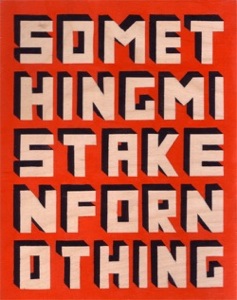 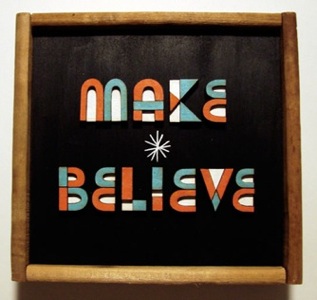  A reminder that the opening for Scott Albrecht's first San Francisco solo show is tonight, Friday, from 6-9pm at The Curiosity Shoppe. Last night, I previewed the exhibition, titled "Something Mistaken For Nothing," and was delighted by the detail and warmth of every single piece, from the hand-drawn typographical works to painted wood pieces. "Heart Hands" above? Mine now. See more at Scotty Five Alive.
|
| Make your own custom fit earbuds Posted: 27 Aug 2010 10:27 AM PDT Collin Cunningham of Make: Online shows you how to make your own custom fit earbuds. I've used quite a variety of sound-isolating personal audio gear; around-ear cans, in-ear buds, as well as active noise-canceling models. All of these posed problems for me in one way or another. Most often, it came down to issues with comfort and how well each design could maintain a good seal on my substantial noggin.Collin's Lab: Custom fit earbuds |
| Rudy Coby at El Rey Theatre in LA, October 23 Posted: 27 Aug 2010 10:09 AM PDT |
| Craft and Make projects in Evernote Trunk Posted: 27 Aug 2010 10:01 AM PDT  About a month ago, Evernote (a fantastic cloud file storage and retrieval system that I use many times a day) introduced a new feature called the Trunk, which offers add-ons to the service along with a number of "Notebooks" from selected partners. Both MAKE and CRAFT have notebooks in the Evernote Trunk, and they contain lots of free and fun projects from the magazine and website. |
| This is what a quadrillion looks like Posted: 27 Aug 2010 09:58 AM PDT  The Tonic offers, via Submitterator, a handy series of images that helps visualize great, big, scary old numbers, in order to make them a little less meaningless. It starts with a single 1 cubic millimeter block, and builds up from there, until you get something the size of a skyscraper. There's also some nifty facts about things that happen in quadrillions, though I don't know how accurate they are. To wit:
Ignis Fatuus: A Quadrillion To Scale |
| Tiger cub found inside suitcase Posted: 27 Aug 2010 09:46 AM PDT 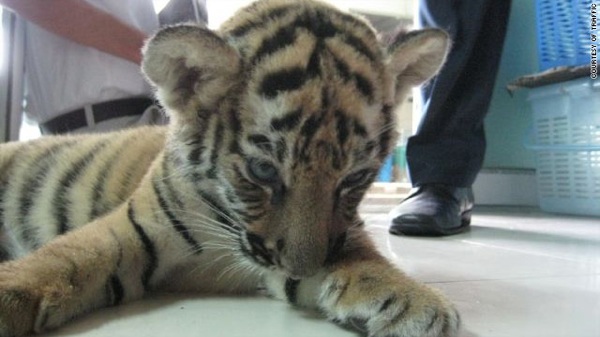 This adorable tiger cub was found in a suitcase packed with plushies when the luggage went through an X-ray machine at Bangkok's Suvarnabhumi International Airport. From CNN: Officials are trying to determine where the cub came from and whether it was caught in the wild or bred in captivity, (wildlife trade monitoring organization) TRAFFIC said."Live tiger cub found in suitcase at Thai airport" |
| Popular Mechanics tackles the myths of Hurricane Katrina Posted: 27 Aug 2010 10:03 AM PDT What do you think you know about Hurricane Katrina? An unpredictable mega-storm? Floodwalls weren't built properly? Anarchy took over in the streets? Wrong. Wrong. And wrong, says Popular Mechanics. If you can sift past the unfortunately funky page layout on this story, you'll find a fascinating look at the myths of Hurricane Katrina, and some practical ideas for how to better prepare and respond next time. (Ed. This story is from 2006, but I think it's still interesting in light of the 5th anniversary of Hurricane Katrina.) |
| Microsoft.com permanently under attack Posted: 27 Aug 2010 09:38 AM PDT |
| The political chemistry of oil Posted: 27 Aug 2010 09:33 AM PDT Great TED talk by Lisa Margonelli of the New America Foundation Energy Policy Initiative about the aftermath of the Gulf oil spill, political theater and confronting Americans with the real cost of gasoline. (Via Jaymi Heimbuch) |
| Bananas are radioactive—But they aren't a good way to explain radiation exposure Posted: 27 Aug 2010 09:29 AM PDT  Just look at that radioactive banana. There's nothing special about it or where it was grown. All bananas are radioactive, because all bananas contain the radioactive isotope Potassium-40. In fact, a lot of things you might not suspect of being radioactive are, including Brazil nuts, and your own body. And this fact is sometimes used to downplay the impact of exposure to radiation via medical treatments or accidental intake. A post by nexusheli on the Submitterator turned me on to the idea of the Banana Equivalent Dose—a way of putting radiation exposure into context by comparing intake from, say, local milk just after the near-disaster at Three Mile Island, to intake from a normal, workaday banana. Wikipedia explains the point of this exercise:
This isn't just about pro-nuclear propaganda. "Picocurie" is one of those words that really doesn't mean anything to lay people. Confusing units of measurement, when combined with the word "nuclear" can, understandably, freak people out. And, depending on the situation, there isn't always cause for said freak out. Having a way of explaining what picocurie means, in the context of everyday, normal, safe exposures, really is a useful tool for putting radioactivity into a context the public can understand. But, the Banana Equivalent Dose probably isn't the best way to do that. The problem is that this system implies that all radioisotopes are created equal—That there's no difference between 520 picocuries of Potassium-40 and a similar intake of, say, radioactive iodine. And that simply isn't true. I contacted Geoff Meggitt—a retired health physicist, and former editor of the Journal of Radiological Protection—to find out more. Meggitt worked for the United Kingdom Atomic Energy Authority and its later commercial offshoots for 25 years. He says there's an enormous variation in the risks associated with swallowing the same amount of different radioactive materials—and even some difference between the same dose, of the same material, but in different chemical forms. It all depends on two factors: The Potassium-40 in bananas is a particularly poor model isotope to use, Meggitt says, because the potassium content of our bodies seems to be under homeostatic control. When you eat a banana, your body's level of Potassium-40 doesn't increase. You just get rid of some excess Potassium-40. The net dose of a banana is zero. And that's the difference between a useful educational tool and propaganda. (And I say this as somebody who is emphatically not against nuclear energy.) Bananas aren't really going to give anyone "a more realistic assessment of actual risk", they're just going to further distort the picture. Geoff Meggitt has written a book about the history of radiation and protection. It's called Taming the Rays, and is available on Lulu.com. Image: Some rights reserved by Jason Gulledge |
| Cannibal restaurant in Germany? Posted: 27 Aug 2010 09:34 AM PDT Ads for a new Berlin restaurant called Flime are requesting people to donate body parts for hearty meals. Naturally, people are flipping out. Of course, whether this is all a hoax remains to be seen. I bet it's a (rather provocative) prank. From The Guardian (sculpture by Leonhard Kern): "Cannibal restaurant adverts turn German stomachs" |
| Jazz musician jams with animals Posted: 27 Aug 2010 08:42 AM PDT 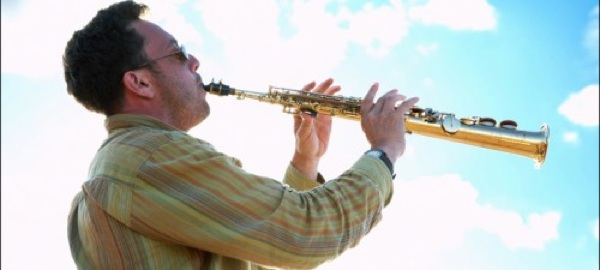 David Rothenberg is a jazz clarinetist who jams with animals, specifically birds and whales. He's also a philosophy professor at the New Jersey Institute of Technology and wrote two books on his efforts to make music with birds and whales: Why Birds Sing: A Journey Into the Mystery of Birdsong and Thousand Mile Songs: Whale Music in a Sea of Sound. BB pal Oril Cotel interviewed Rothenberg for Sierra Club Radio. The episode also features bits of his animal audio collaborations. David Rothenberg on Sierra Club Radio |
| This is not a perfect dinosaur turd. Or is it? Posted: 26 Aug 2010 11:44 AM PDT A few weeks ago I had a chance to chat with Paul Taylor in the Paleontology department of the Natural History Museum. I was chatting with him about a curious specimen that has, over the years, gained a little bit of notoriety in the museum's collection. You see, it was a mystery. What you're looking at is a slide of Dinocochlea ingens. On the left, you've got the original 1922 paper which detailed the 1921 finding; in the middle, an image from a newspaper of the day (which I think would make a brilliant T-shirt!) depicting the scale of the odd find; and on the far right, you can see a scan of the only photo that records the original "in ground" condition of the specimen. The history of the find is pretty interesting since the hypotheses that have been given for its identity include (in order of their proposal): 1. It is a fossil of a FREAKISHLY big snail! I love how these hypotheses form a story, since it paints a pretty good picture of how ideas in science are defined, batted about, and generally dismissed. Initially, the going hypothesis, formed by BB Woodward (the author of the above paper), and also a mollusc specialist, was that this was a massive gastropod. So big in fact that it was more than double the size of any other existing snail specimen. In fact, he was so sure it was a snail that he named it, Dinocochlea igens or terrible snail: kind of a nod to Dinosaur or terrible lizard. Unfortunately, his hypothesis didn't hold for very long. The specimen didn't look quite right to be a gastropod, since the contours of proper fossils usually exhibited certain biological nuances (as well as traces of materials from the shell). As well, the direction of the spiral was also odd - it seemed as if these Dinocochlea specimen could spiral either way, which is actually quite odd for gastropods. In any event, the next hypothesis that surfaced suggested that the huge Dinocochlea specimen was actually a large coprolite, or in non-paleo terms, big fossilized excrement. This particular theory came about because the site of extraction was noted for being a locale well known for digging up Iguanodon bones. However, this too was a little shaky. To put it bluntly, these coprolite specimens were much too "nice looking" to be remnants of feces. An organism would need some pretty fancy sphincter muscles to get such a nice "ice cream" effect. As well, coprolite pieces would have materials embedded that would be indicative of an organism's diet: this was not found to be the case here. The last hypothesis involved a fossil type known as a concretion. Essentially what might have happened here, is that long long ago, there was a remnant of a thin spiral path left in the dirt by some burrowing creature. This would have left small but physically present shifts in the grains of sand, minerals, and rock around that path, which in turn provide potential spaces for mineral cements to seep into during the process of sedimentation. Over the years, these would become squeezed into what might look like a mini spiral fossil - similar in structure to a really thin spiral drinking straw. However, these hard concretions inevitably shift the sedimentary rock that they are in, potentially creating other spaces for more mineral cement to come in. The net effect is that if the conditions are right, and if you wait long enough, concretion specimens will act like nuclei and will get "fatter." In other words, if you imagine the dimensions of a drinking straw getting wider, it might eventually look like our Dinocochlea specimen! So, is this final hypothesis the right one? Of late, Paul, as a side project, has taken it upon himself to get to the bottom of this matter - i.e. what exactly is this thing? And after some extensive physical analysis, which included attempts to model this fattening process, this third hypothesis is looking pretty good these days. |
| Scott Pilgrim vs. The Last Airbender Posted: 26 Aug 2010 08:32 PM PDT Edgar Wright recently posted this mash-up of Scott Pilgrim and Avatar: The Last Airbender on his blog. It's a great video and, as Wright points out in his post: Fun Fact:Mae Whitman appears in both Scott Pilgrim as Roxy Richter and in The Last Airbender (animation) as the voice of Katara; one a nemesis and the other a friend.Even better, Wright has a small exchange with the mash-up artist in the comment section. I can't help but think that must be a pretty amazing fan moment. Earlier this week, Wright posted about The Matrix/Scott Pilgrim mash-up. There's been a lot of interesting fan art related to Scott Pilgrim this summer (I blogged about a Scott Pilgrim/The Venture Bros. mash-up over at LA Weekly last week) and it's nice to see Wright sharing some of the output. |
| Tonoharu: Excellent graphic novel about an English teacher in Japan Posted: 27 Aug 2010 06:59 AM PDT  It took me a long time to get around to reading Tonoharu: Part One, Lars Martinson's graphic novel about a young American who gets a job as an English teaching assistant in a small Japanese town. I'm so glad I did, though, because its incredibly good. It reads like an autobiography. Martinson actually did work in Japan as an English teacher, so I'm sure parts of the story are based on his experiences.* It took me a long time to get around to reading Tonoharu: Part One, Lars Martinson's graphic novel about a young American who gets a job as an English teaching assistant in a small Japanese town. I'm so glad I did, though, because its incredibly good. It reads like an autobiography. Martinson actually did work in Japan as an English teacher, so I'm sure parts of the story are based on his experiences.* Published in 2008, and a winner of the prestigious Xeric Award, Tonoharu is a story of isolation, frustration, and mystery, with just the right amount of black humor to keep it from being depressing. Dan Wells, the main character, is a recent college graduate who gets a job at a junior high school in the town of Tonoharu. The teachers and staff at the school are mostly standoffish, and because his contract requires him to stay on campus all day even when he has nothing to do, the resulting boredom combined with the language and cultural barrier are at times almost unbearable. The few foreigners that Dan gets to know are too weird to connect with in a meaningful way. And an American girl he meets and becomes smitten with seems to want to have as little to do with him as possible. As time goes on, Dan establishes something of a social network (including an affair with a female teacher at his school who visits his apartment to have sex with him), and he is introduced to a baffling family of seemingly wealthy Europeans living in an old Buddhist temple. This book is just the first part in a series of forthcoming graphic novels about Tonoharu. Martinson kindly sent me an uncorrected proof of Tonoharu: Part Two, which I devoured immediately. It's coming out in December. He told me he's half way finished with the third book. It's slow going, because of the exquisite cross hatching he uses, but the overall effect is stunning. I can't recommend Tonoharu highly enough. Buy Tonoharu: Book One on Amazon Sample panels after the jump.
*In 1987 I worked as an English teacher in Tokyo for four or five months, and this story dredged a few memories. In Martinson's book, the main character isn't given much guidance by his employers in preparing to teach his students. Similarly, the English school I worked at would not give me a textbook or lesson plan, and when I asked if I could buy the text book, they told me they had no copies to sell me. I was expected to teach the lessons in the book without knowing what they were! It was really weird and uncomfortable to be standing in front of 20 tuition-paying people hoping to learn English and me having no idea what to do. I ended up quitting soon after. They owners of the school were furious at me. Go figure. (I ended up getting a job at an English conversation coffee house which was so much fun I would have done it for free.) |
| Posted: 27 Aug 2010 06:42 AM PDT Inspired by the smooth wordsmithery 50cent has been dropping on twitter, my lovely wife Tara Brown decided to whip this imaginary chat between him and Rainn Wilson using their actual tweets. While this conversation never happened, when you watch this, you know it totally could have. [video link] |
| You are subscribed to email updates from Boing Boing To stop receiving these emails, you may unsubscribe now. | Email delivery powered by Google |
| Google Inc., 20 West Kinzie, Chicago IL USA 60610 | |





















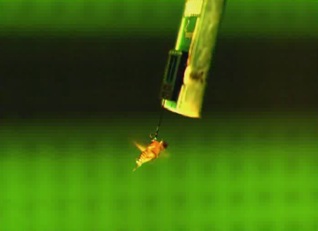 "As autonomous robots get smaller, their size and speed approach that of the biological counterparts from which they are often inspired," they write in the paper, adding that their technique could "be relevant to the tracking of micro and nano robots, where high relative velocities make them hard to folow and where robust visual position feedback is crucial for sensing and control..."
"As autonomous robots get smaller, their size and speed approach that of the biological counterparts from which they are often inspired," they write in the paper, adding that their technique could "be relevant to the tracking of micro and nano robots, where high relative velocities make them hard to folow and where robust visual position feedback is crucial for sensing and control..." 










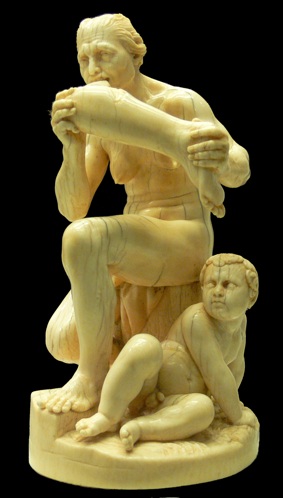 "Members declare themselves willing to donate any part of their body," the advertisement reads, adding that any resulting hospital costs will be taken on by the restaurant. They say they are also looking to employ an "open-minded surgeon".
"Members declare themselves willing to donate any part of their body," the advertisement reads, adding that any resulting hospital costs will be taken on by the restaurant. They say they are also looking to employ an "open-minded surgeon".









No comments:
Post a Comment